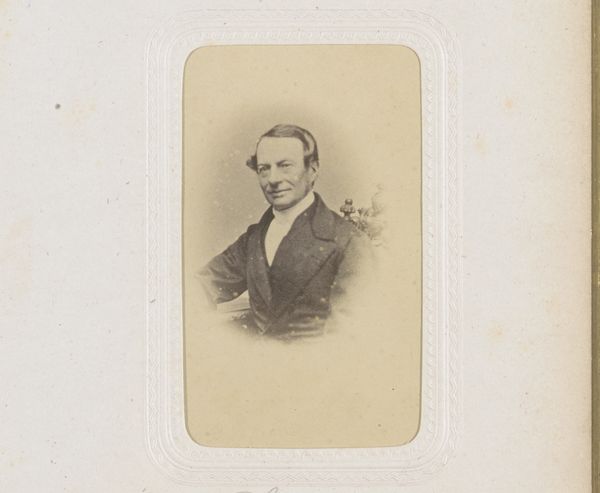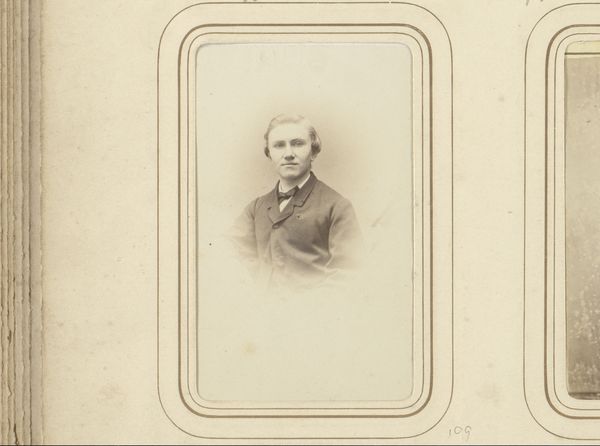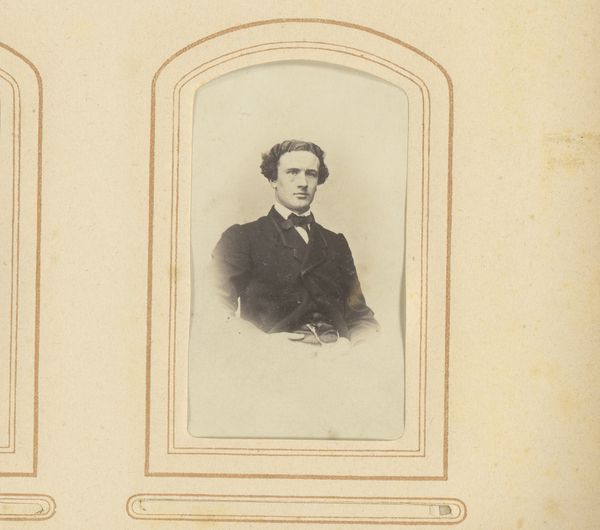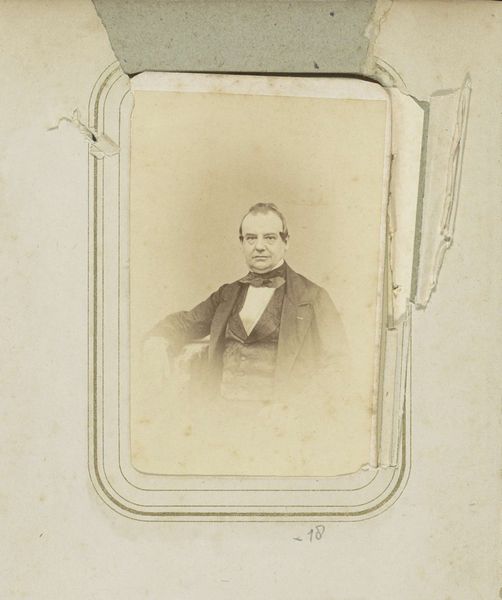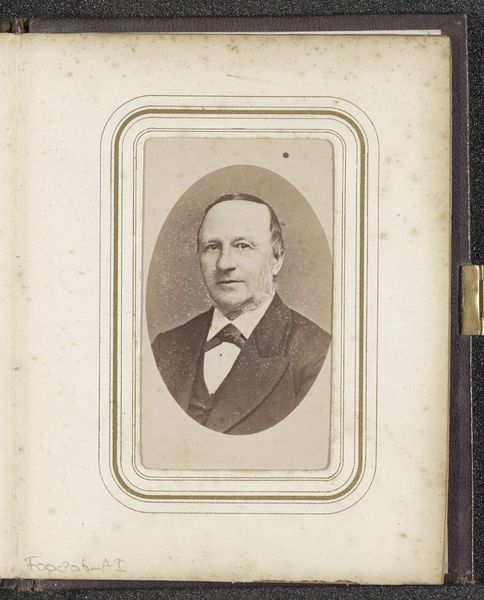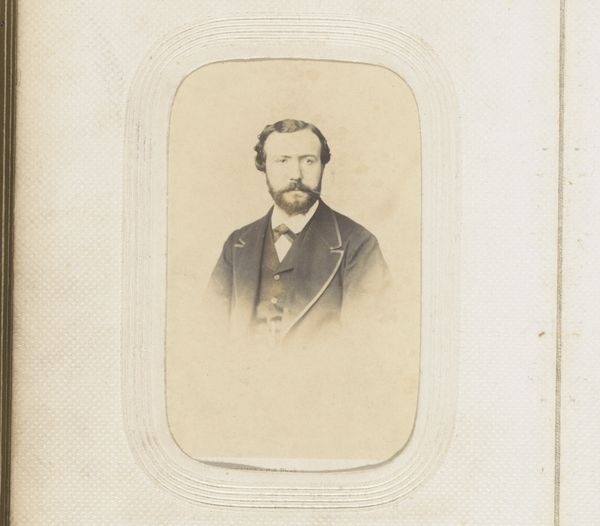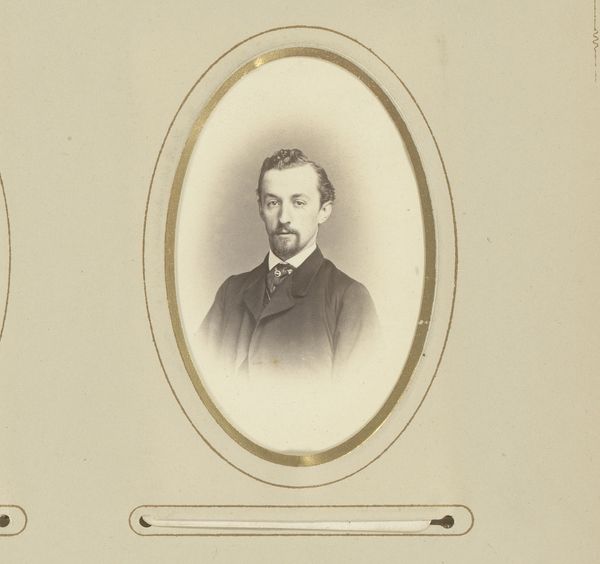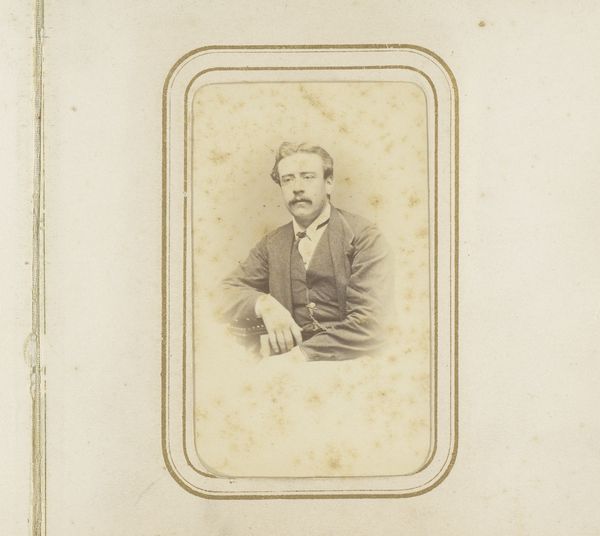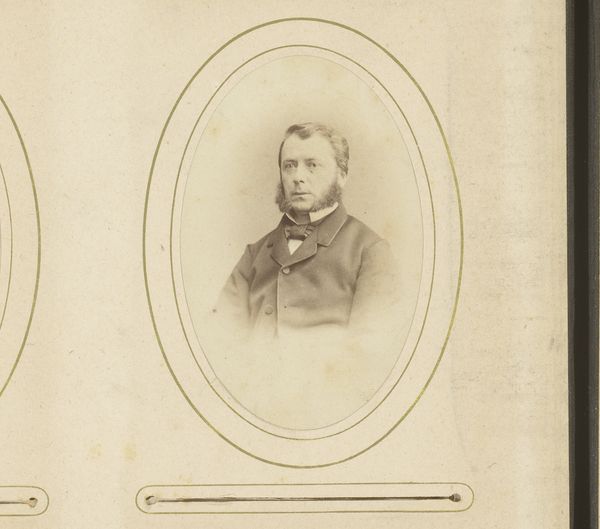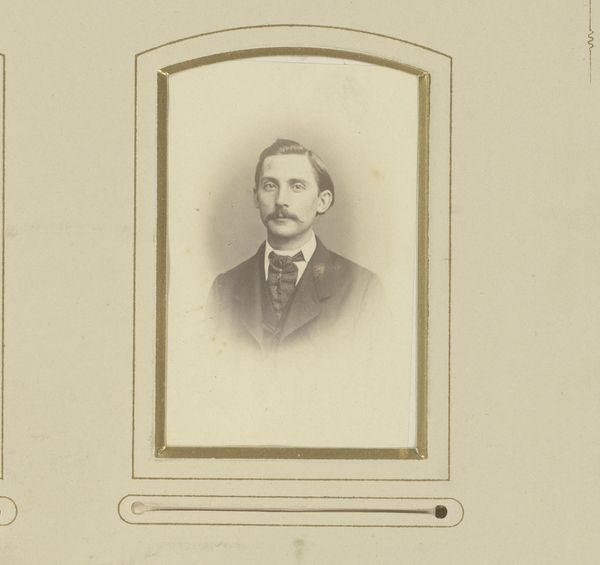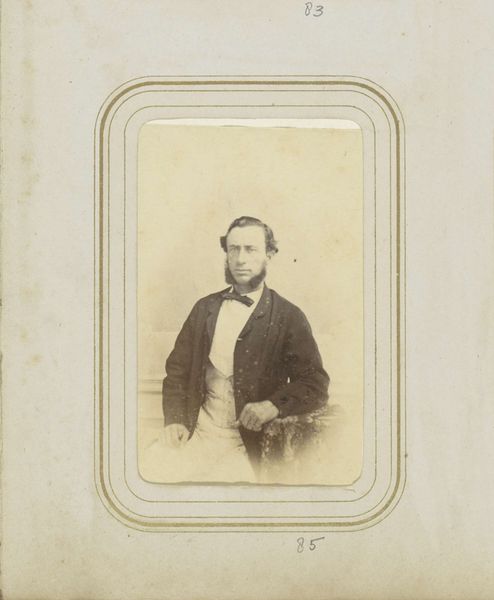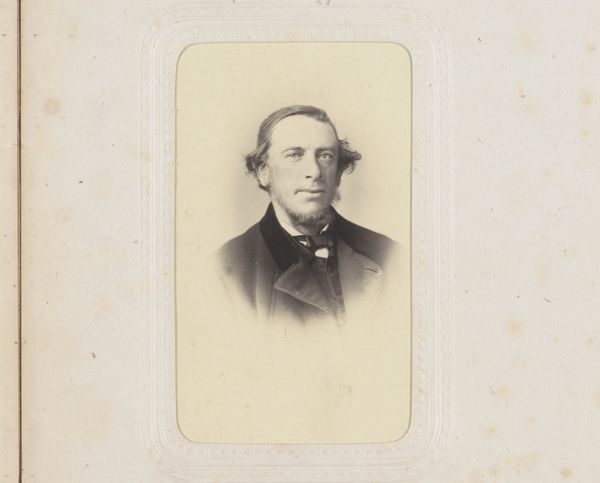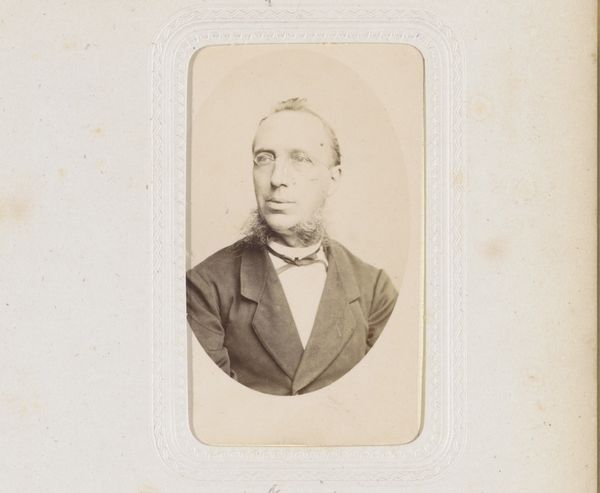
photography
#
portrait
#
photography
Dimensions: height 82 mm, width 49 mm
Copyright: Rijks Museum: Open Domain
Curator: Here we have a photographic portrait of a young man sporting a bow tie. It's believed to have been taken sometime between 1850 and 1900 by George Heyer. What are your initial thoughts? Editor: Immediately, I’m struck by the sepia tones, the paper it is adhered to, its scale, and how it underscores the formality of the sitter, the seriousness imbued through the very photographic process. Curator: Indeed. Heyer’s focus is on presenting the figure within the tight frame, but that larger framing apparatus becomes integral to its completion, an embellishment to the subject's status. Editor: Status, exactly. Think about the cultural weight embedded in early photography. Posing for a portrait was a considered act; not simply snapping an image, but engaging with evolving class structures and democratization of representation, all of that’s implied by his suit. Curator: Absolutely, and that tight bow tie. But look how the photograph complicates class semiotics by almost denying a certain uniformity through blurring or smudging areas in order to almost dissolve this uniformity. This becomes very apparent upon a detailed investigation. Editor: That slight blur reinforces what interests me—how the technologies of image making impacted the social and lived experience. We see how materials mediated someone’s persona but we also get the indexical nature of photography coming to play: the hand involved. Curator: Agreed. While the photograph conveys its historical moment, Heyer is also acutely aware of capturing form—consider how the neutral background, the almost vacant backdrop, only emphasizes that somber, even romantic demeanor that’s both haunting and affecting. Editor: In this photograph, material production becomes closely bound to social display; both contribute toward photographic visual economy as a product of time, place, and the conditions under which such images came to be, reflecting a time of transition in cultural values and representation. Curator: Well, considering the semiotic and the structural forces inherent in photography as material reality, what's presented to us in effect, isn't an accurate depiction of someone, but an accumulation of signs or a materialization of such conventions. Editor: Yes, the photograph does that, allowing the past to touch us directly, its textures and traces—a tactile sense of both an individual and the era which it came out of.
Comments
No comments
Be the first to comment and join the conversation on the ultimate creative platform.
